10 Elements of a Successful Online Beauty Store
In this article, we leverage our experience building and optimising online stores for beauty and cosmetics brands across the globe to share the must-have elements of a successful ecommerce site in this industry. We cover everything from quizzes and bundles to augmented reality and user generated content.
Written By
Hannah Smiddy
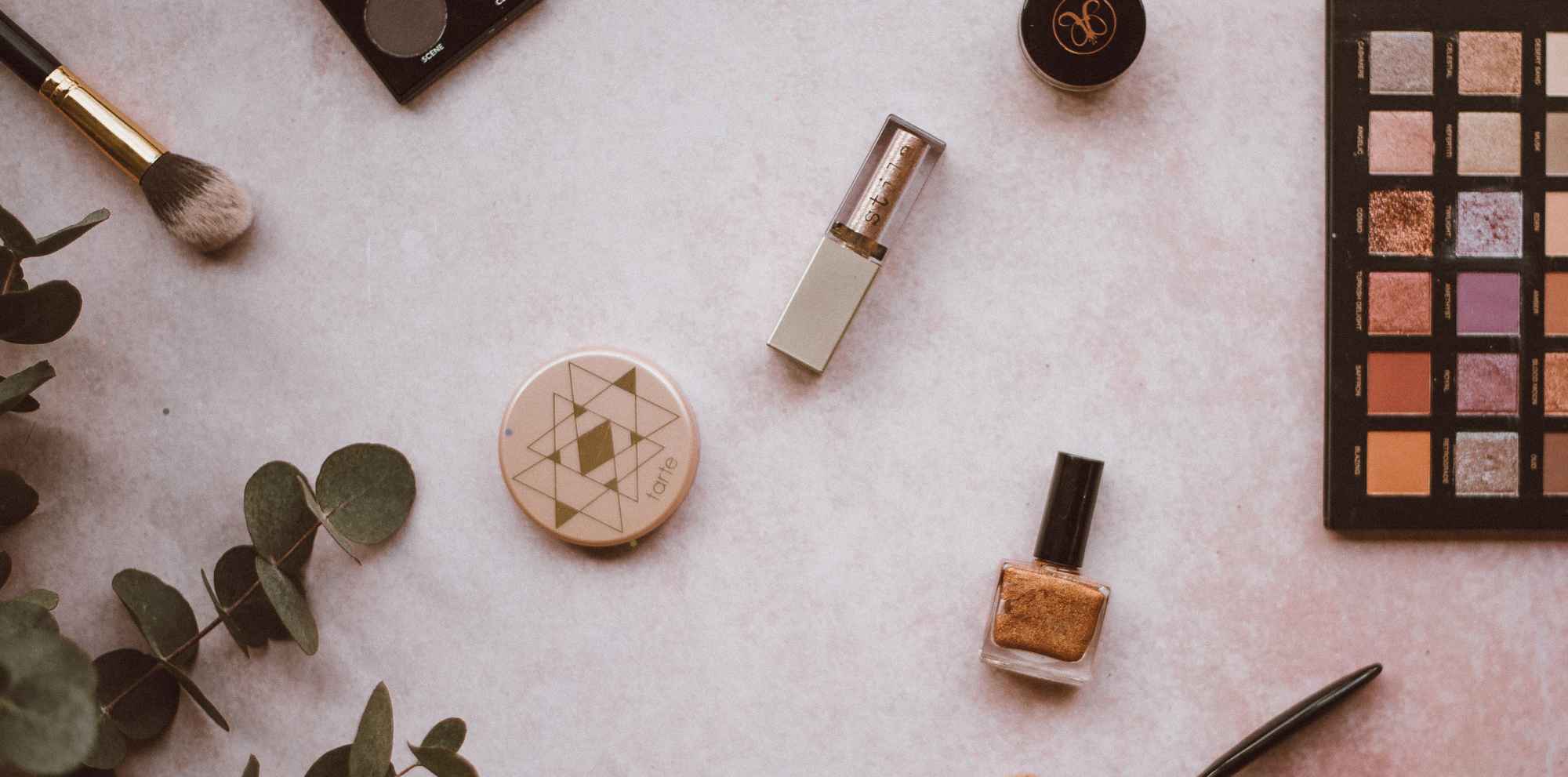
Fuelled by rapid digital expansion, the global beauty and cosmetics industry is predicted to reach nearly US$785 billion by 2027. And when it comes to ecommerce, sales have more than doubled in the last five years; rising from $45 billion in 2018 to $99 billion in 2023.1
Shopify has proven to be an effective foundation from which beauty and cosmetics brands can accelerate their digital growth, with some of the industry’s biggest names trusting the platform with their business – including Hismile, Morphe, Kylie Cosmetics and Unilever. The platform allows brands to blend beautiful front-end experiences with powerful tech stacks – with stunning results.
Our experience building and optimising ecommerce solutions for a spectrum of leading beauty and cosmetics brands – including Wilkinson Sword, Bouclème, Silk Oil of Morocco, FFS and Kent Brushes – has given us a rich understanding of what it takes to drive traffic, conversions and retention in this competitive industry.
In this article, we use our learnings to share 10 things that contribute to a successful online beauty store. We reference projects that our teams have undertaken, as well as strategies that other leading retailers in the industry have successfully implemented.
Beauty ecommerce must-haves
1. Exquisite branding and design
Whilst the importance of branding and design certainly isn’t anything new in the world of ecommerce, aesthetics are particularly crucial for an online beauty and cosmetics store.
A good-looking website design will inspire trust amongst users and instantly boost their confidence in the quality of your products. After all, if you landed on a beauty ecommerce site with a disenchanting design, it’s likely you wouldn’t have much faith in what the brand was selling. Creating a flawless first impression that communicates the creativity and credibility of your brand is key.
Leveraging elements such as colour palette, font and visuals, you’ll want your ecommerce site to project a sleek and beautiful image of your brand that instantly captures attention and immerses visitors into your story.
Your brand identity should flow across from your ecommerce store to all of your other channels and touchpoints – both online and offline. This will help to create a cohesive journey for a customer, from the point where they spot your brand’s ad on social media to when they’re unboxing their purchase at home.
2. Streamlined product discovery
Helping customers find the right product for their needs quickly and efficiently is a key piece of the puzzle for online beauty retailers. By streamlining product discovery, you can improve both the customer experience and your conversion rate.
Product quizzes for personalised recommendations
One way you can do this is with an on-site product quiz, which asks shoppers a series of questions about them and their needs and then connects them with relevant products based on the answers provided. This allows users to make more informed purchasing decisions, and is a great way to make consumers feel valued.
You can leverage the zero-party data captured in a quiz to provide personalised interactions later on in the customer journey – interactions that make shoppers feel increasingly connected to your brand.
For example, if a user answers your quiz stating that they have an issue with damaged hair and are looking to improve its condition, you can use this information to ensure the emails they receive are tailored to this concern. You could send them personalised emails that:
- promote products that contribute to healthy hair, like leave-in masks, conditioners and collagen supplements;
- share news about relevant haircare product launches;
- recommend blog content with hair care tips; and
- inform them about discounts on relevant hair care products.
Marketing automation platform Klaviyo is a powerful tool that provides a detailed single customer view and enables brands to send meaningful communications to consumers. It integrates with quiz solutions like Octane AI, pulling through customers’ answers into their individual profiles, where they can be used to inform future messaging.
Needs-based navigation
A needs-based approach to site navigation can also provide more streamlined routes to product discovery.
For skincare retailers, this might mean allowing visitors to shop by skin type (dry, oily or combination) or skin concern (fine lines, acne, dark circles etc.). Or for hair care brands like Swanky client Bouclème, this could translate into menu items based on curl type (waves, curls or coils) and curl goals (including definition, strength and volume).

In just a few clicks, visitors will be directed to the most suitable collection page for them, speeding up the path to purchase for high intent shoppers.
You can find out more about the needs-based navigation menu pictured above in our case study about the design and development work we did for Bouclème.
Suggesting complementary products
On product pages of online beauty stores, it’s common to see other items that might be of interest to a customer being promoted, often accompanied by add to cart buttons. This can be particularly helpful if you offer products for a full beauty routine or a complete system of care products.
We designed and built a bespoke ‘Complete the routine’ section for Bouclème’s product pages. This provides an enhanced experience for customers (particularly those who are new to the site) and demonstrates the brand’s commitment to helping users discover a set of complementary curl care products.
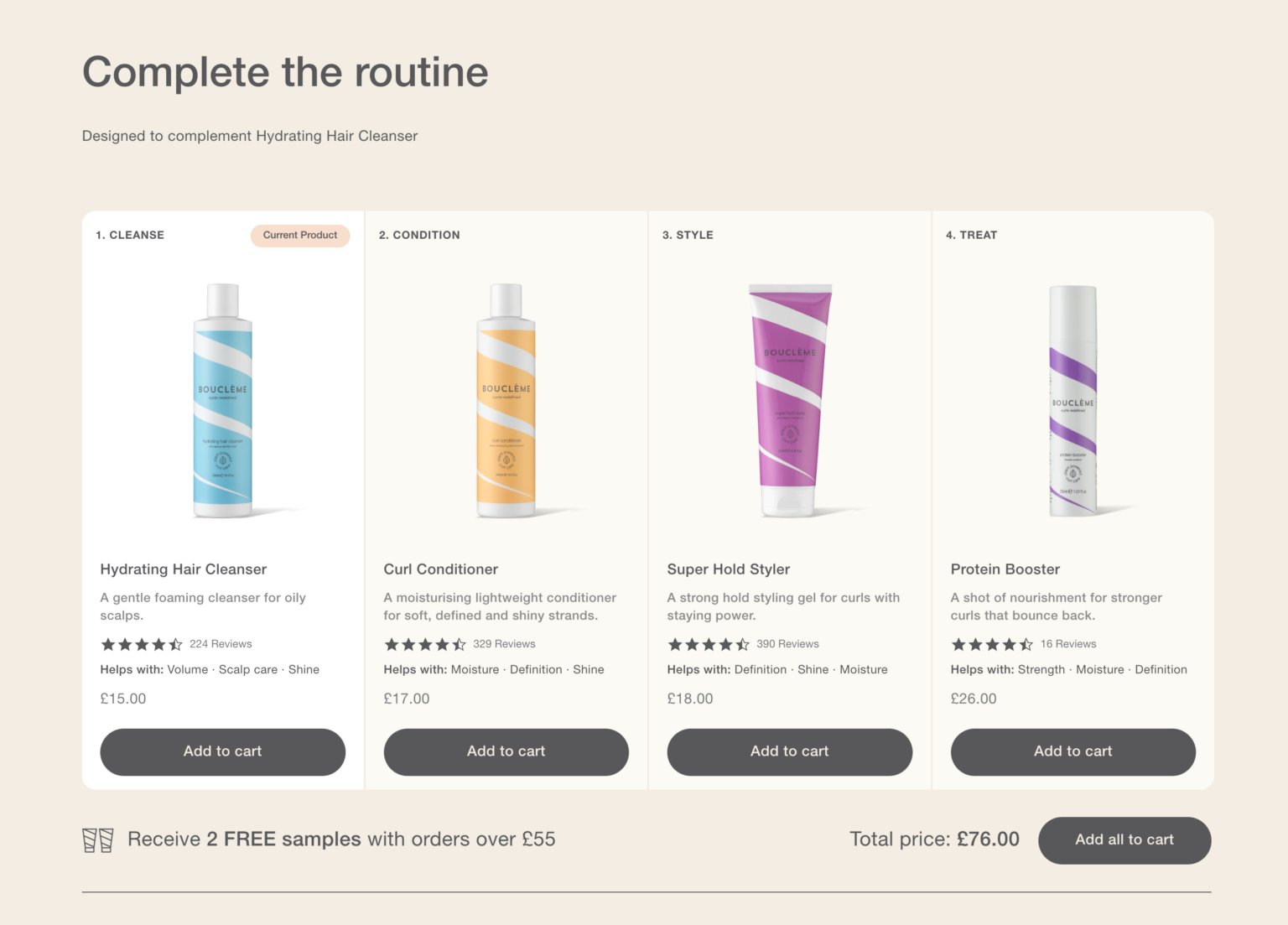
3. Visual user generated content
User generated content (UGC) lends itself perfectly to beauty and cosmetics ecommerce, especially ‘before and after’ transformation visuals. This type of social proof is an excellent way to demonstrate the USPs of a product, with much more impact than a written review.
It can also be extremely compelling when leveraged across a brand’s social channels – capturing attention and encouraging clicks through to your ecommerce store.
Bouclème frequently shares before and after shots on Instagram and TikTok, as well as at key touch points across its Shopify Plus site. These visuals showcase the results of the brand’s ‘30 Day Challenge’, illustrating the benefits of its curly hair care system to potential customers in just a glance.
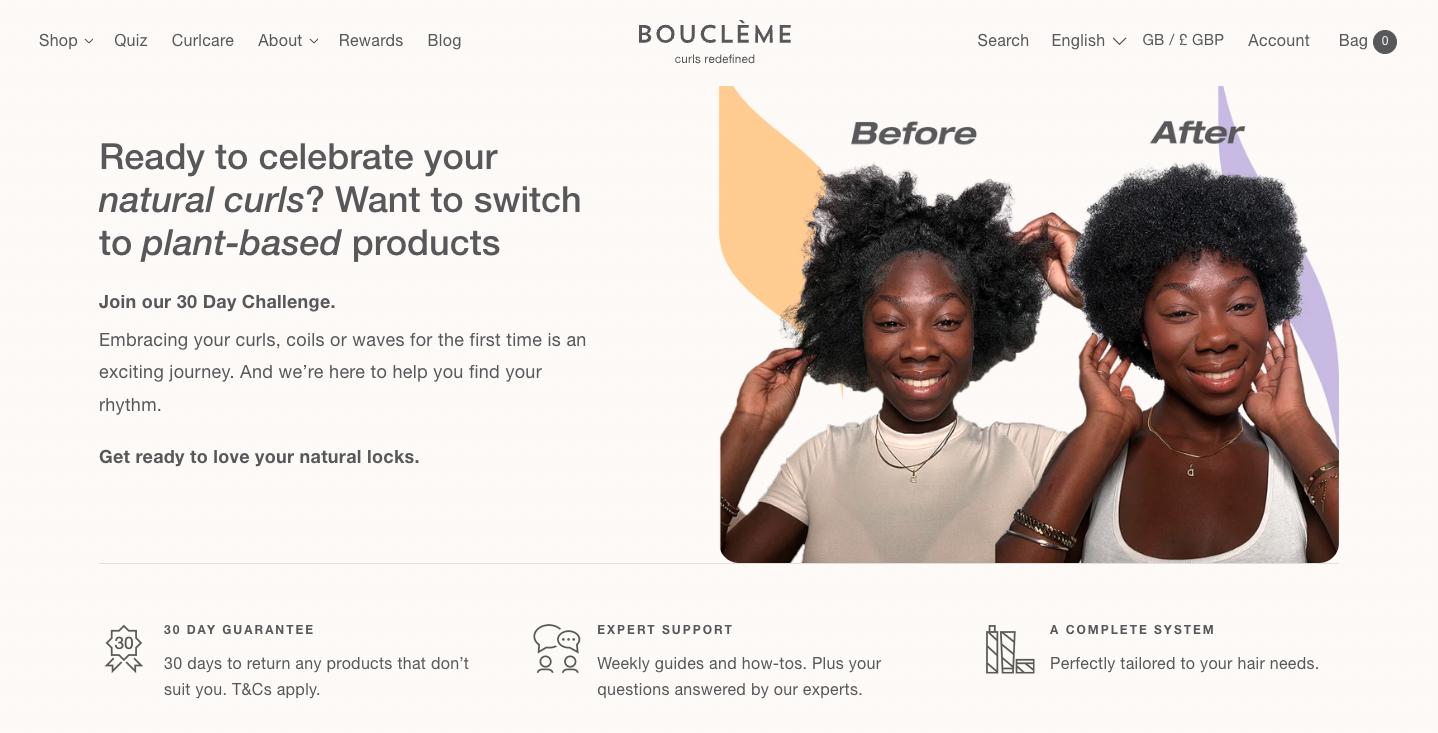
Another Swanky client cleverly leveraging visual UGC on its Shopify Plus store is Brisbane-born beauty and cosmetics empire Silk Oil of Morocco. A shoppable Instagram feed not only serves as inspiration for website visitors, but provides a direct route to product pages so customers can get the exact items they need to recreate these beauty looks themselves.
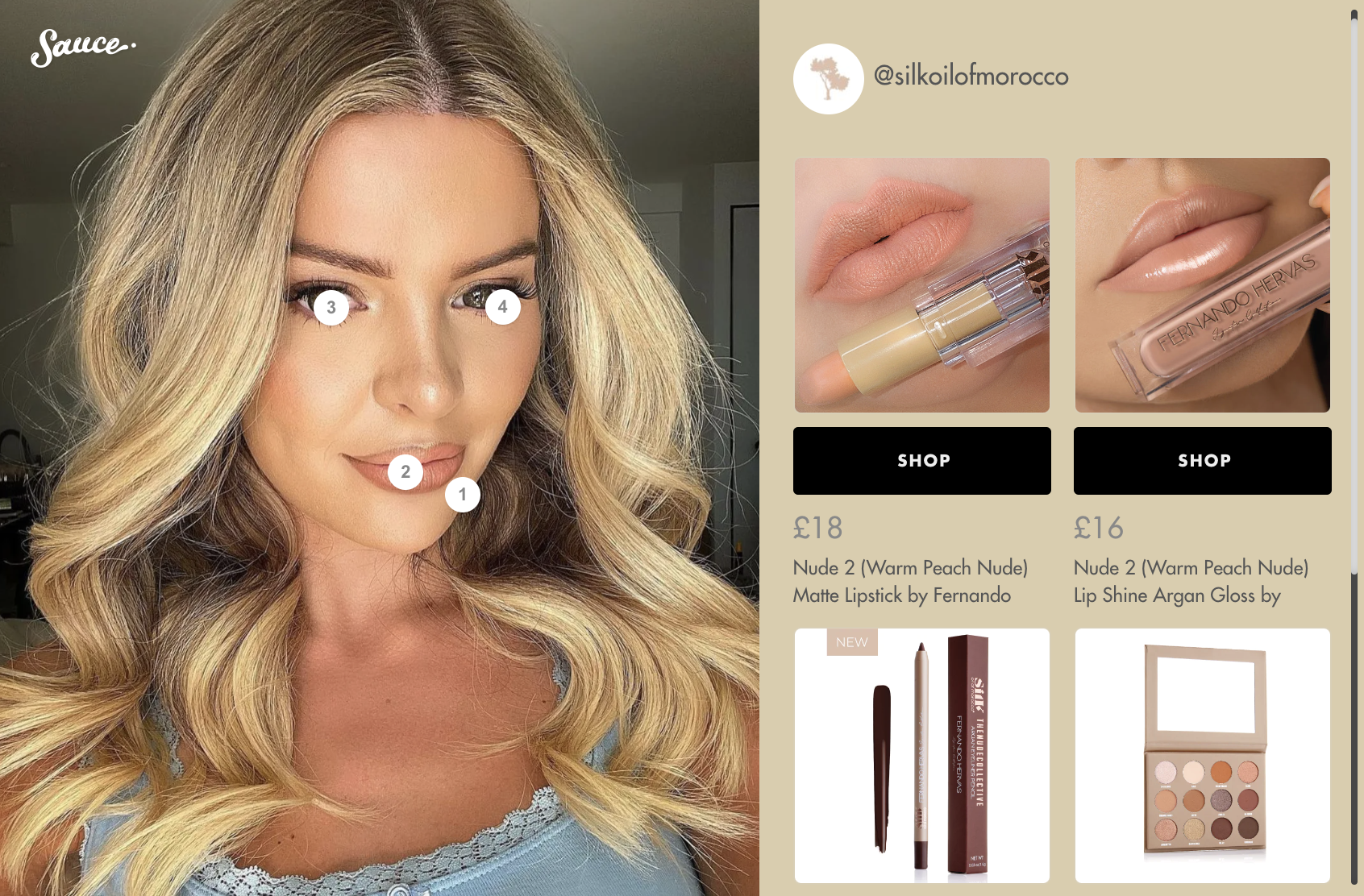
To capture visual UGC, consider incentivising customers to share photos and videos as part of their product reviews. You could reward them with loyalty points which can then be exchanged for discounts or exclusive gifts.
Be sure to promote a hashtag for customers to tag their social posts with, too. Reposting customers’ photos and videos is a quick and easy way for a brand to show people just what their products can do, encouraging traffic to its online store.
4. Trust signals
As well as UGC from current end consumers, there are other trust signals that you can leverage across your beauty and cosmetics site to help boost shoppers’ confidence:
- Third-party endorsements. By prominently displaying logos of relevant, established organisations on your online store (like beauty magazines or industry bodies), you can quickly communicate credibility. Shopify Plus retailer Skin Inc provides a great example of this:

- Awards and accreditations. If you’ve been shortlisted for, or won, an industry award, be sure to shout about this achievement across your online beauty store. This is a great way to increase confidence in your brand and its products.
- Sales counters. Communicating to website visitors which other products have been purchased lately can be a simple way to build trust in your brand and gently nudge users along the purchase funnel. You can see an example of this from Silk Oil of Morocco’s website below:

- Security badges. With just one glance, a secure payment badge reassures cautious consumers that their card details will be protected if they make a purchase from you.
- Details of ethical/sustainable practices. With conscious consumerism on the rise, transparency around what your products contain, where your ingredients come from and how they’re tested is a must-have for any online beauty and cosmetics store.2 Shoppers are also increasingly curious about brands’ carbon footprints, seeking visibility over sustainable initiatives like recycled packaging and green shipping options. Highlighting your commitment to ethical, sustainable business practices, like Bouclème has in the snapshot below, is another key driver of consumer trust.
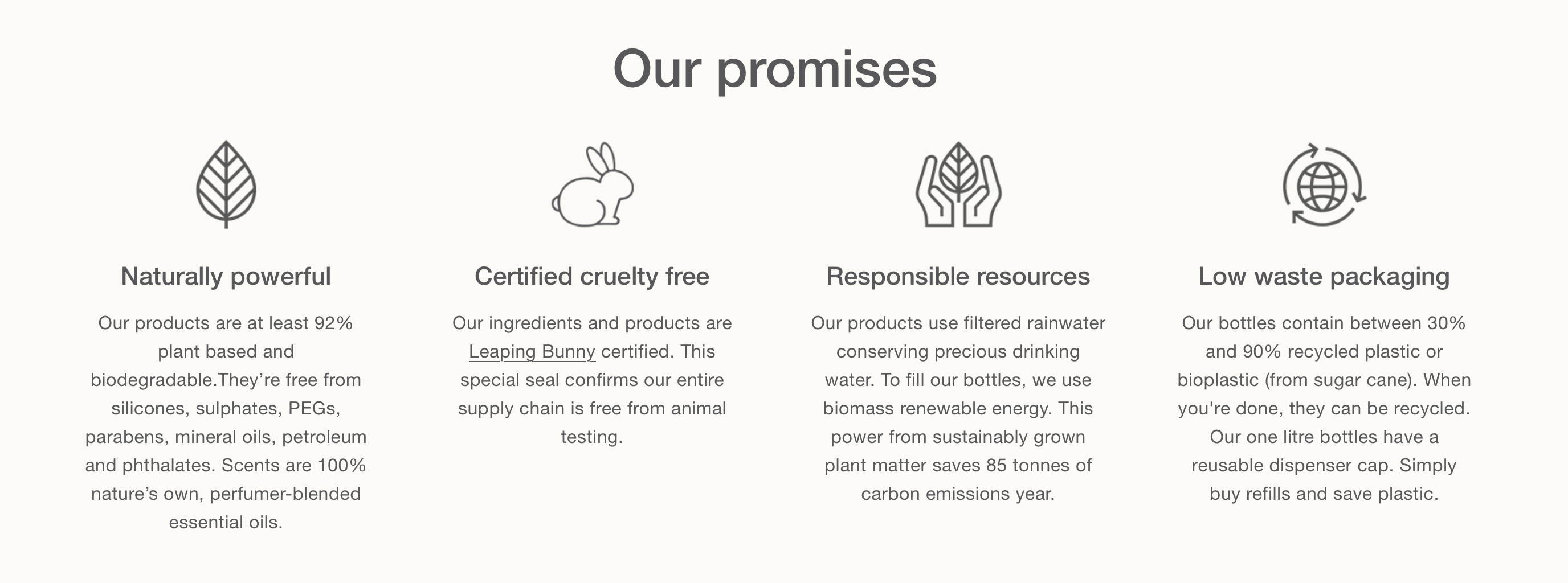
5. Replenishment subscription option
Whether it’s shinier hair, softer skin or whiter teeth we desire, we tend to purchase our beauty and cosmetics hero products on a recurring basis, at regular intervals. This makes them the ideal candidates for a ‘subscribe and save’ option.
If your customers display this type of routine purchasing behaviour, you could be leaving money (as well as reduced acquisition costs and better retention metrics) on the table if you don’t explore the viability of a replenishment subscription model.
There’s also the benefits for subscribers to consider, including convenience, money savings and improved customer experience.
Should you offer a subscription option to customers, there are some key elements that your online beauty store should include:
- A branded subscription landing page that clearly outlines the benefits for customers of subscribing, along with details about how your subscription service works.
- A comprehensive FAQ section that anticipates common questions and helps to quell consumers’ potential concerns.
- A user-friendly customer portal where subscribers can easily edit, pause or even cancel their subscription.
At Swanky, we’ve helped several beauty and cosmetics brands tap into the replenishment subscription trend, leveraging Recharge to implement subscribe and save solutions.
For example, subscription formed part of a recent multifaceted project with international razor brand Wilkinson Sword. Thanks to an integration between Shopify Plus and Recharge, subscribers can pick their blades, choose a suitable delivery cadence and then enjoy 15% off each order. Crucially, they can amend or stop their subscription at any time. Read more about this subscription solution and get reaction from the brand’s former Head of Ecommerce in our Wilkinson Sword case study.
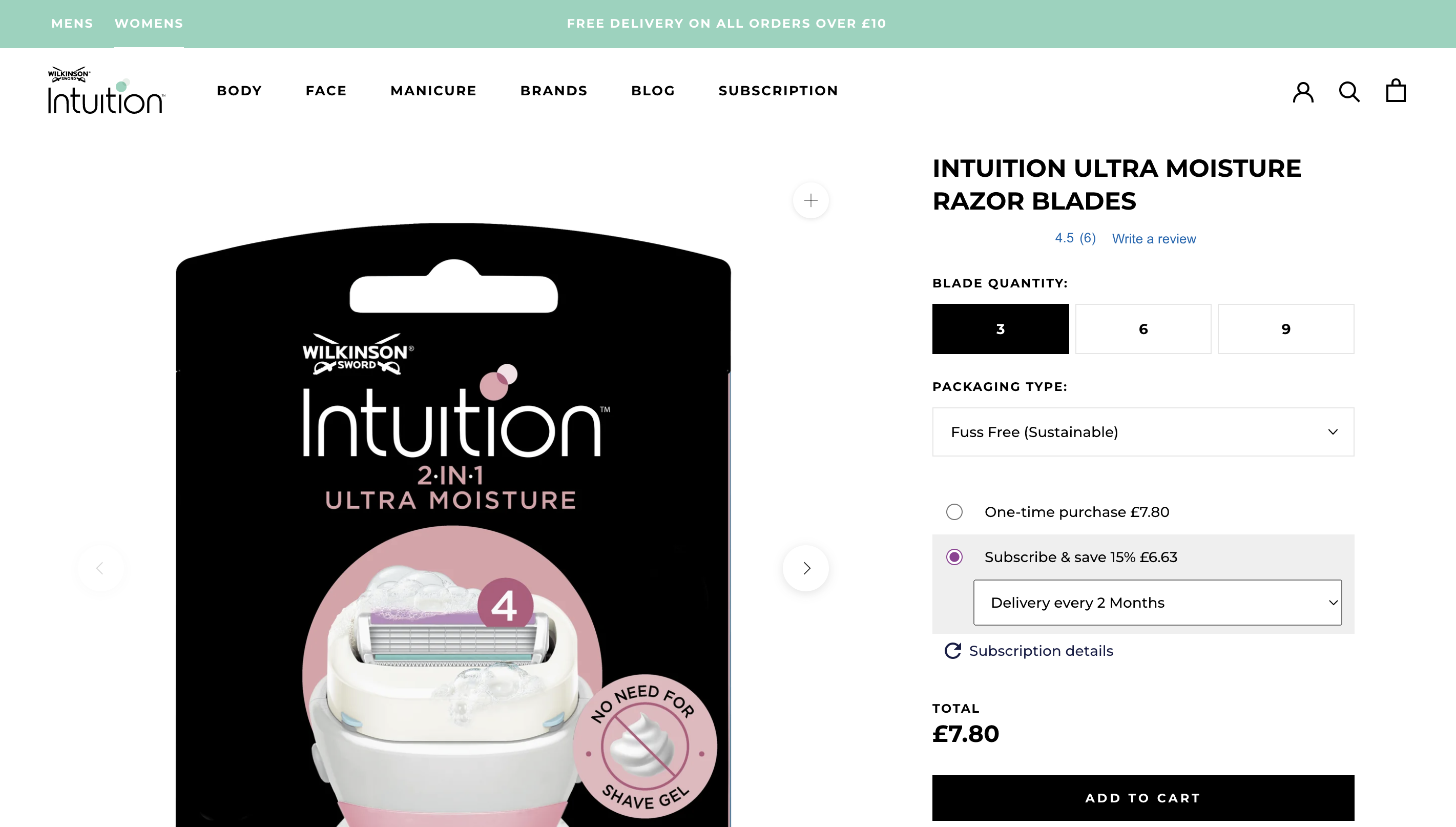
We also launched a custom subscription flow on Shopify Plus for another popular personal grooming subscription brand. Following the launch, the company saw a 240% increase in revenue, 60% improvement in conversion rate and 90% boost to revenue per user.
6. Product bundles
Product bundling is a proven strategy for increasing average order value and revenue, as well as driving awareness of new products. By employing a ‘buy more, pay less’ approach, bundles strengthen the perceived value of products to customers.
This tactic is particularly relevant for beauty and cosmetics brands selling complementary products that can be easily grouped together – like a razor and blades, or shampoo and conditioner targeting the same hair concern.
Australian teeth whitening brand and Shopify Plus success story Hismile leverages the power of the bundle on its ecommerce store. Its team has curated a ‘Stain Removal Bundle’ with a stain eraser and colour corrector serum. A combination of impactful colours, large scale imagery and discount-led copy works to increase the appeal of this bundle.
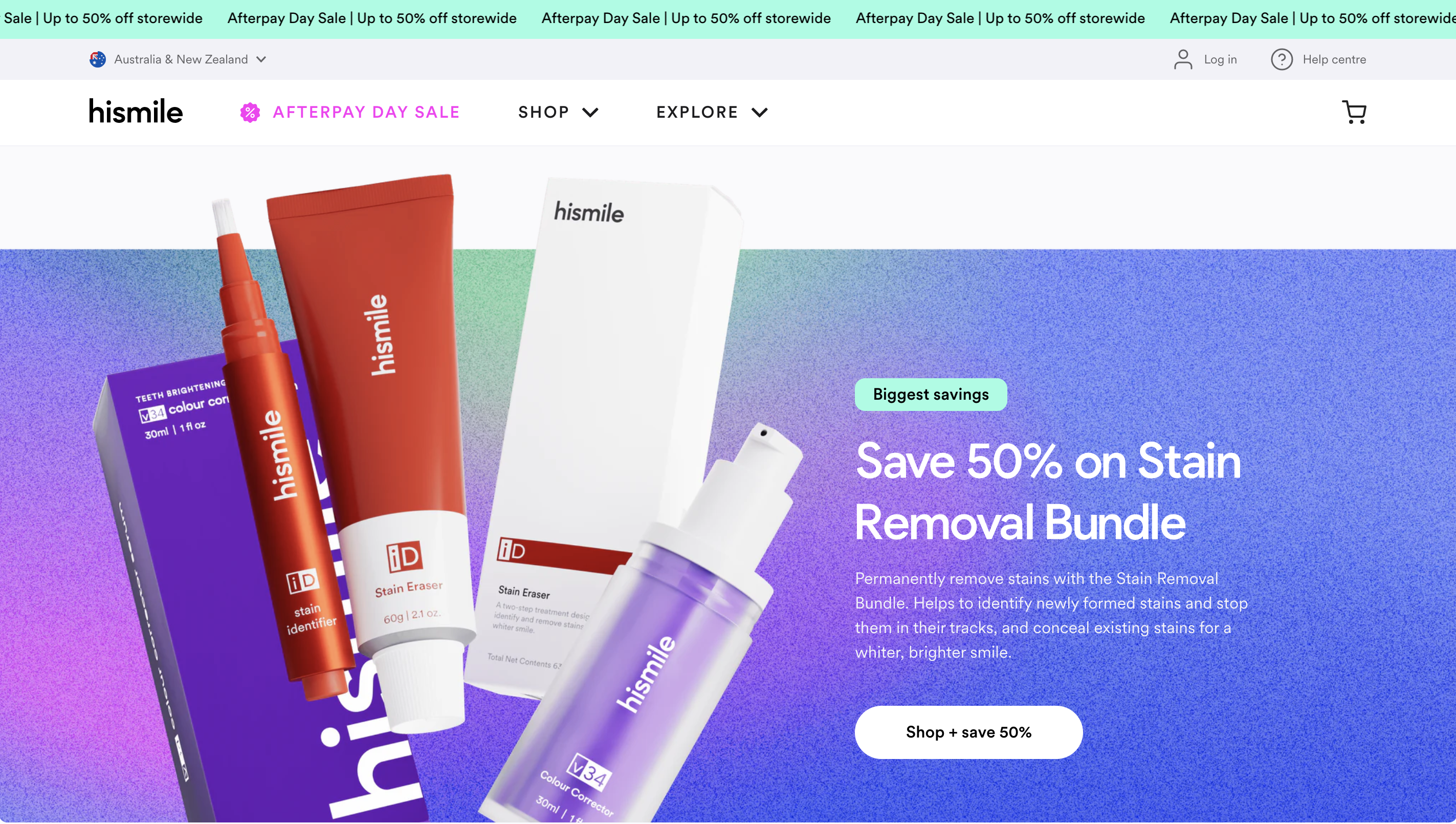
7. A compelling loyalty program
Increasing competition in the beauty and cosmetics market makes customer retention particularly challenging. Whether it’s makeup, skincare or personal grooming products they’re after, consumers are presented with a myriad of options when they head online to shop. Often, it’s the brand with the most appealing offer at the time who wins the purchase.
To cut through the noise and keep your customers coming back for more, consider implementing a loyalty program. This is a great way to build meaningful, long-term relationships with customers, increasing retention and lifetime value.
However, beyond just offering points per purchase, you’ll need to think creatively about how you can incentivise customers to return again and again to your site. Securing a shopper’s loyalty requires making them feel special and providing real value through unique, members-only perks. This might involve:
- offering members early access to new products;
- inviting them to exclusive VIP industry events and experiences;
- sending them birthday gifts;
- providing members with access to exclusive content (think interviews with beauty influencers or tutorials with popular makeup artists);
- giving them free expedited shipping; and
- facilitating charity support by members.
International beauty retailer 100% Pure leverages a tiered loyalty program (powered by LoyaltyLion) to reward shoppers. Benefits for members include many of those we listed above.
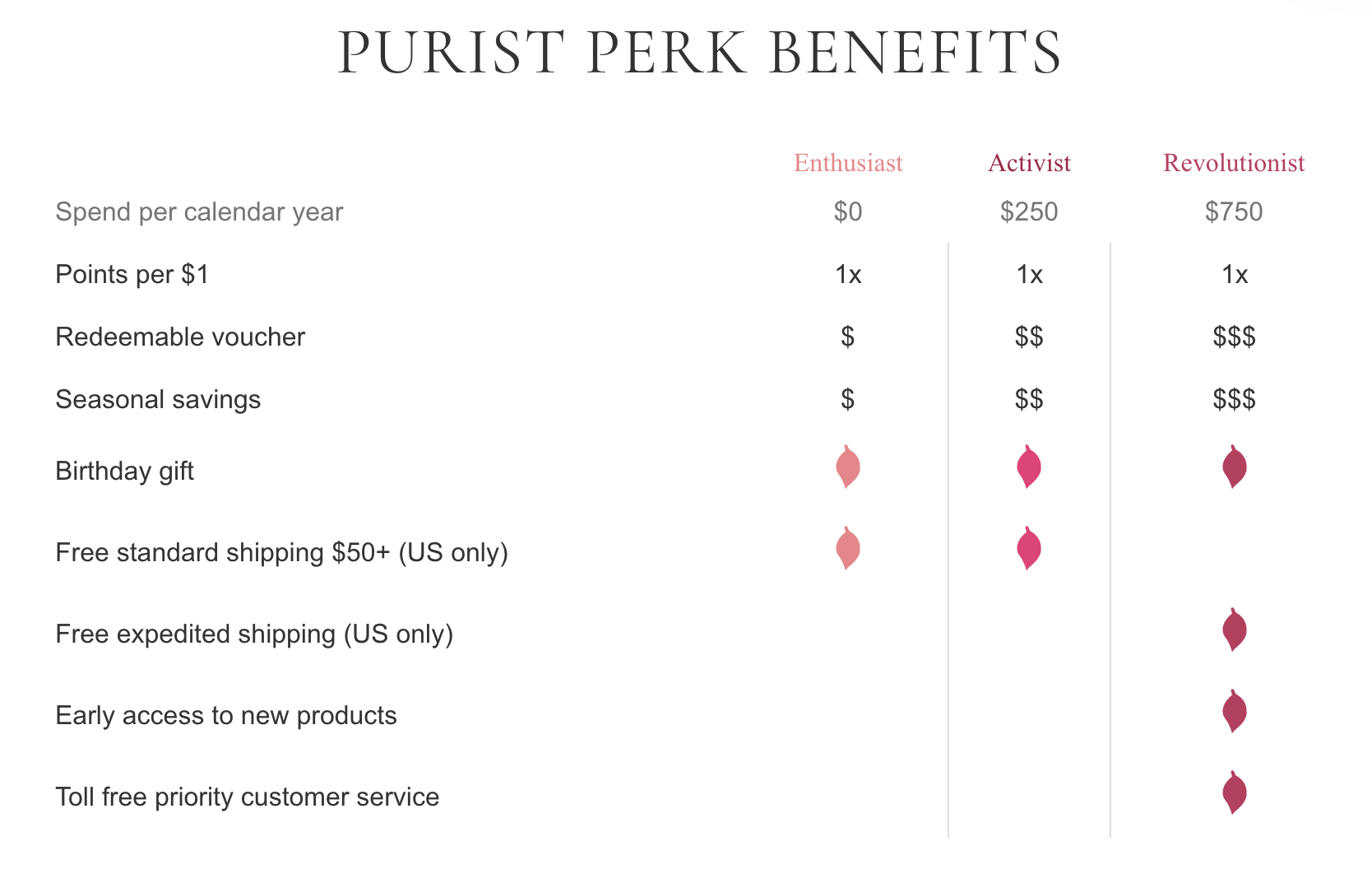
8. Replication of the in-store experience
Not being able to test out products can sometimes present a barrier to online beauty and cosmetics sales, as can the inability to seek out guidance from in-store professionals. According to research, 46% of consumers prefer to see beauty products in person before committing to a purchase, whilst 18% look for advice from store experts at beauty counters.3
With this in mind, many brands in this industry are innovating with exciting ways to provide an immersive ecommerce experience that replicates that of the brick-and-mortar shopping experience.
Augmented reality (AR) and other disruptive technologies are changing the way that consumers interact with beauty and cosmetics brands online. Let’s take a look at three examples of this in action.
L’Oreal’s AR makeup try on on tool
L’Oreal customers can experiment with different beauty looks from home thanks to the brand’s virtual try on technology, developed by AR pioneers Modiface. A face-tracking algorithm allows users to test out makeup and hair colours in real time, helping them to make a more informed purchase decision.
ILIA’s shade finder support
Clean beauty brand and Shopify Plus retailer ILIA has two options to help shoppers find the right shade of skin tint and foundation for their skin. Users can either complete a short shade match quiz or send the ILIA team a selfie.
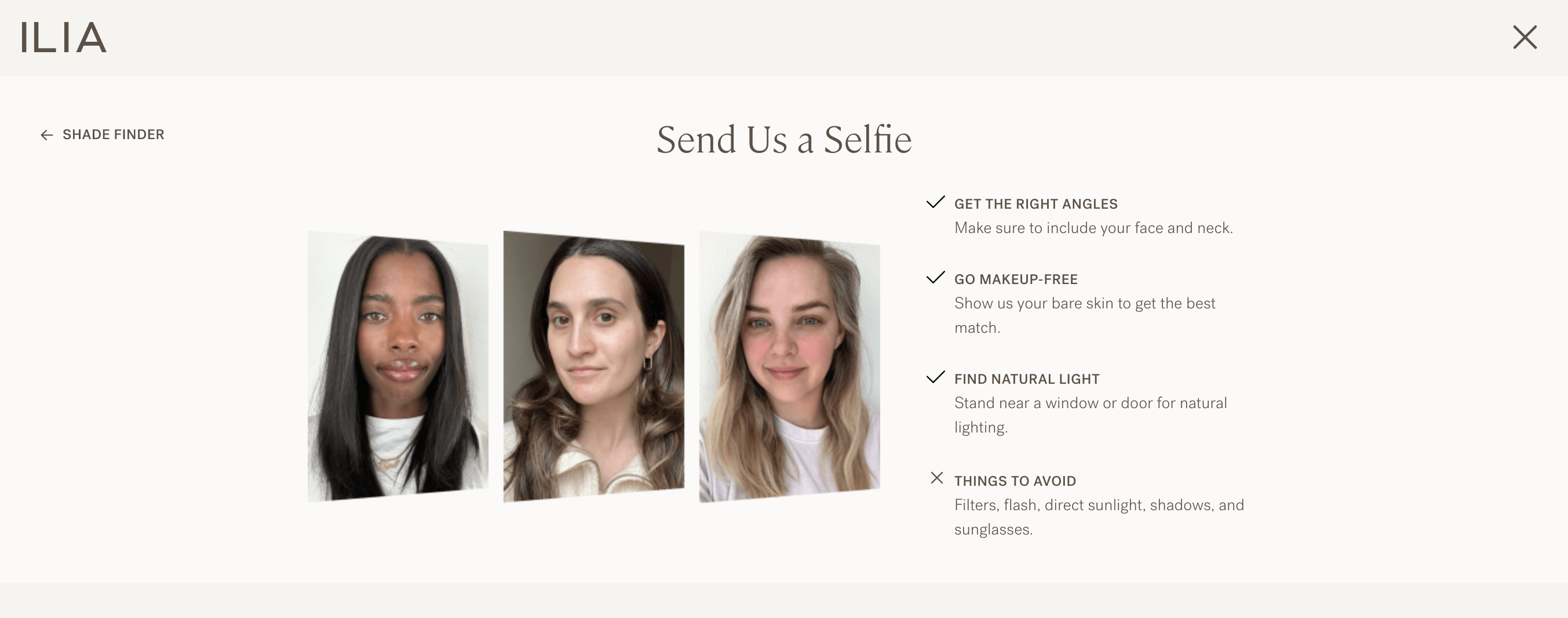
Skin Inc’s skin coach app
Skin Inc offers the world’s first 8-in-1 virtual skin coach app, +SABI AI, which tracks your skin health using “revolutionary AI skintelligence technology”. It leverages the power of AI to identify a user’s skin needs and recommend treatments based on factors such as sleep, stress, water intake and blue light exposure.
Offering customers the chance of a curated skincare journey from the comfort of their own homes is a powerful way to bridge the gap between physical and digital retail.
If you’re interested in how disruptive technologies are impacting ecommerce, check out this article examining the role of AR in the online fashion industry.
9. Educational and inspirational blog content
By creating a hub of educational and engaging content on your online beauty store, you can enhance your customers’ experience of your brand and provide additional value beyond your products. This will help to build rich, long-term relationships with your customers, keeping your brand top of mind when they’re shopping online for beauty and cosmetics products.
Unique, authoritative content will also help you to establish your brand as a leading voice in your niche, thereby increasing shoppers’ confidence in your products.
We discuss more advantages in our article on the benefits of content marketing.
Here are few different examples of content themes that you could consider in the beauty and cosmetics space:
- Exploring the hero ingredients of your products (where do they come from and what are their benefits?).
- A look behind-the-scenes, showing where your products are made and who is involved in creating them. This is a great way of providing transparency for consumers.
- Step-by-step makeup tutorials and how-to product guides.
- Celebrating new product launches.
- Content that relates to your audience’s wider interests, such as self-care, healthy living, fashion and lifestyle. This will very much depend on your specific audience, so be sure to analyse the customer data available to you.
82°E, an international self-care start-up co-founded by Bollywood superstar Deepika Padukone, has curated an engaging Journal on its Shopify Plus store. The articles shine a spotlight on the Indian ingredients used in the brand’s skin products, as well as educating consumers on best practices for looking after their skin. This is a proven way to build trust as a new brand.
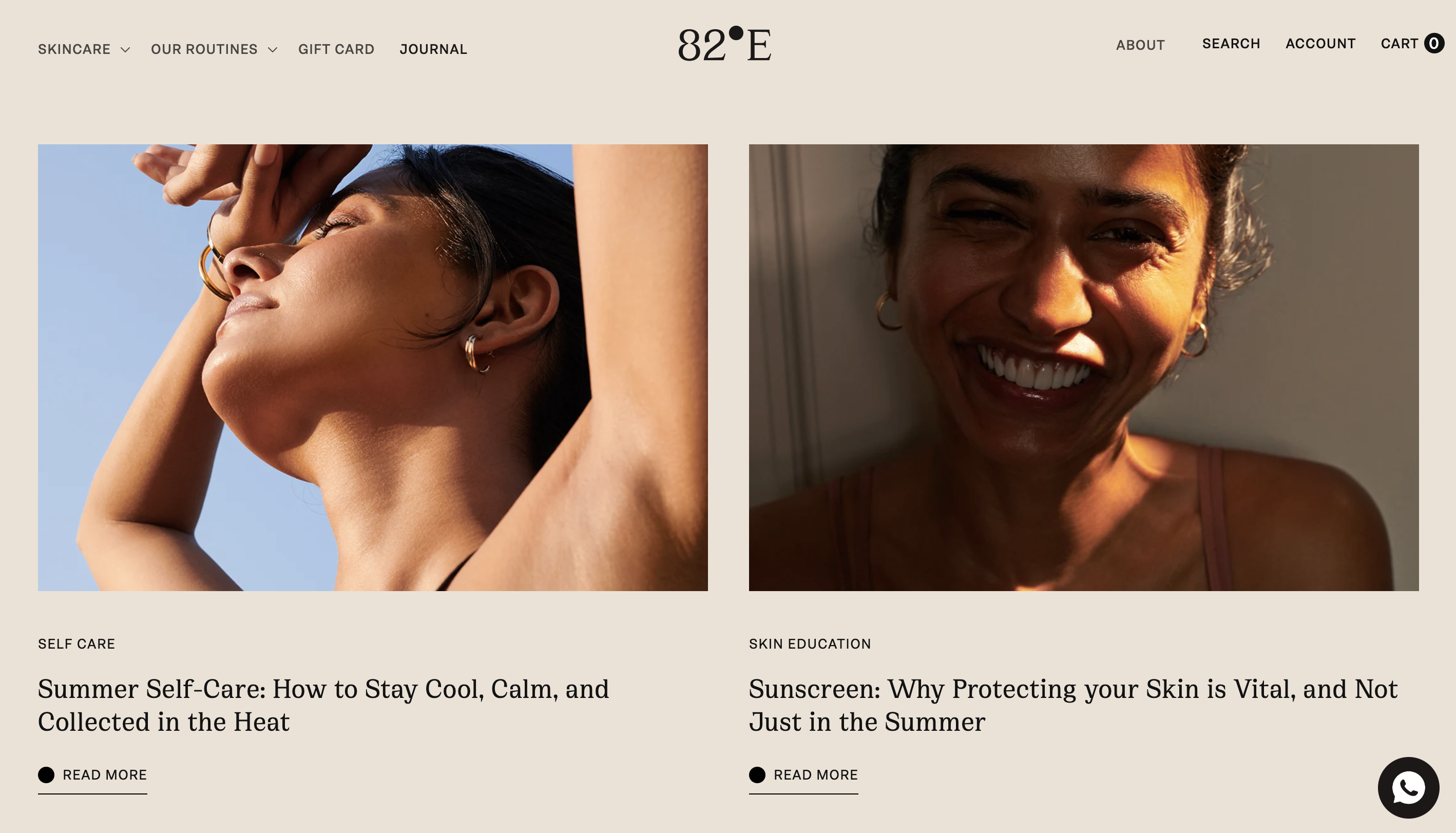
10. Influencer partnerships
Known for its ability to help turn social media scrolls into sales, influencer marketing can spark large-scale conversations around your products and help to rapidly grow trust amongst your audience.
In the beauty and cosmetics industry, marketing strategies have shifted away from the likes of television and print media, towards digital tactics. Brands have embraced influencer marketing in particular. In fact, back in 2019, global beauty giant Estée Lauder famously revealed that the brand spends 75% of its digital marketing budget on social media influencers.4
By partnering with relevant individuals on Instagram and TikTok, you can help drive traffic to your website and increase sales. As visual mediums, these particular channels are a perfect fit for beauty and cosmetics companies.
If you’re just starting out with influencer marketing, look to partner with micro-influencers in your niche – individuals with 10k-100k followers. Product recommendations from influencers of this scale are more likely to be considered authentic and genuine than endorsements from macro-influencers.
The founders of Hismile did exactly this, leveraging a legion of micro-influencers to turn their teeth whitening startup into a social media sensation. Before long, the brand found itself partnered with larger Instagram stars like Kendall and Kylie Jenner, which propelled Hismile’s growth across the globe, transforming it into a $130 million powerhouse.
Video has become the gold standard for influencer content – with Instagram Reels and TikTok videos taking centre stage. These types of visuals are a great way to showcase the benefits of a product, as well as the values of a brand. They help to demonstrate an influencer’s affinity with a brand, providing a compelling medium for authentic storytelling.
Looking for a Shopify agency to help you sell beauty products online?
We build gorgeous online beauty and cosmetics stores with our unique blend of creativity, technical innovation and industry knowledge. Once we’ve launched your new Shopify beauty store, we’ll help you drive traffic there and convert more browsers into buyers.
We’re a full-service agency, which means our services extend to things like custom subscription solutions, internationalisation consultancy, retention marketing, bespoke development work and more.
To find out how our teams in the UK, France and Australia can help unlock your ecommerce potential, contact our friendly team of Shopify Plus Experts today.
For reference:
[1] https://commonthreadco.com/blogs/coachs-corner/beauty-industry-cosmetics-marketing-ecommerce
[2] https://www.euromonitor.com/article/conscious-consumerism-shapes-key-themes-in-beauty
[3] https://www.digitalcommerce360.com/article/beauty-ecommerce-sales/
[4] https://www.thedrum.com/news/2019/08/20/est-e-lauder-now-spends-huge-portion-its-marketing-budget-influencers

